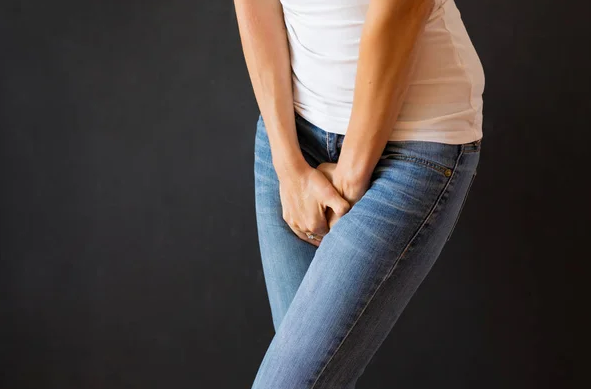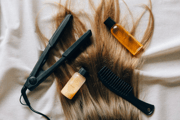
When laughter turns into an embarrassing moment or a sneeze becomes a source of anxiety, you're certainly not alone. Bladder leakage affects a staggering number of Australians—and there's an unexpectedly pleasant way to help manage it.
Over 7.2 million Australians experience incontinence, making it one of our most common yet least discussed health challenges.
For those over 60, the statistics become even more sobering: people aged 85 are five times more likely to experience severe incontinence compared to those aged 65 to 84.
The good news? Recent research reveals that one of life's more enjoyable activities could be part of the solution.
Why bladder leaks become more common with age
Bladder and bowel problems, like incontinence, become more common as you age, and there are several reasons why. For women, menopause plays a significant role as oestrogen levels plummet, leading to changes in the tissues supporting the bladder and urogenital tract.
Almost 4 out of 10 women in Australia experience incontinence, making women twice as likely as men to have the condition. The decline in oestrogen weakens the pelvic floor muscles that help support the bladder, while also causing thinning and drying of vaginal and vulvar tissues.
'The bladder is connected to the vagina, so you can get a lot of urinary symptoms, including the urgency and frequency of urination'
The science behind the bedroom solution
Here's where things get interesting. Pelvic floor muscles are responsible for the involuntary rhythmic contractions during orgasm, and these contractions function as a natural workout for the muscles that control bladder function.
Research consistently shows that pelvic floor muscle training improved arousal, orgasm, satisfaction, pain, and overall sexual function scores in multiple clinical studies.
But the benefits go beyond the bedroom: having a strong and healthy pelvic floor reduces the risk of bladder leaks, as these muscles help control the release of urine, bowel movements, and gas by lifting the internal organs and preventing leakage.
How orgasms strengthen your pelvic floor
During climax, your pelvic floor muscles contract rhythmically and involuntarily. These contractions work similarly to Kegel exercises, strengthening the hammock of muscles that support your bladder, uterus, and rectum. The stronger these muscles become, the better they can prevent unwanted leaks during activities like laughing, coughing, or exercising.
For both men and women, the benefits extend well beyond incontinence control. Studies show that regular pelvic floor exercise can improve erectile dysfunction and may enhance sexual satisfaction by increasing sensation during orgasm and providing greater control over ejaculation.
Beyond the bedroom: other proven strengthening methods
While sexual activity offers natural pelvic floor training, it's just one tool in the toolkit. Kegel exercises remain the gold standard for pelvic floor strengthening, and research confirms that pelvic floor muscle training can cure or improve symptoms of stress incontinence and all other types of urinary incontinence.
The beauty of Kegels is their accessibility—you can do them any time while sitting or lying down, whether you're eating, at your desk, driving, or watching television.
How to do Kegel exercises properly
- Find the right muscles by stopping midstream when urinating (only do this to learn the technique)
- Tighten these muscles for a count of 10
- Relax completely for a count of 10
- Repeat 10 times, 3 to 5 times daily
- Most people notice improvement after 4 to 6 weeks, with major changes possible after 3 months
The spermidine connection: promising but early research
Some experts suggest there may be additional benefits from the compounds naturally present during unprotected intercourse. Spermidine, a naturally occurring compound, has shown promise in various health applications, though research specifically related to bladder health remains limited.
One study found that 30 days of spermidine supplementation increased estradiol levels in some women by 37 per cent, potentially helping with menopausal symptoms that contribute to bladder issues.
However, it's worth noting that recent research suggests spermidine supplements may not significantly increase circulating levels, and doses below 15mg daily are unlikely to have short-term effects.
Practical tips for pelvic floor health
Whether you're exploring natural strengthening methods or traditional exercises, consistency is key. Here are expert recommendations:
Start slowly and build up: Over-exercising can cause muscle fatigue and actually increase urine leakage, so gradual progress is essential.
Make it routine: Incontinence will return if you stop doing exercises, so you may need to continue them for life once you start.
Consider professional guidance: If you're unsure about technique, contact your healthcare provider or ask for a referral to a physiotherapist who specialises in pelvic floor exercises.
Use additional tools when helpful: Vaginal cones are weighted devices inserted into the vagina that you hold in place by tightening pelvic floor muscles, offering another strengthening option.
Did you know?
Did you know?
Although incontinence rates are higher among older people, 7 in 10 people with incontinence are actually younger than 65. This means the benefits of pelvic floor strengthening apply across all age groups, not just seniors.
When to seek professional help
While natural strengthening methods and exercises can be remarkably effective, don't hesitate to seek medical advice. If you're struggling with a bladder problem, help is available, and with the right advice and treatment, problems can often be cured or managed.
Australian resources include:
- National Continence Helpline: 1800 33 00 66
- Continence Health Australia: Offers easy-to-understand booklets and support
- National Public Toilet Map: Shows locations of over 22,000 public facilities across Australia
- Healthdirect: Call 1800 022 222 for 24/7 nursing advice
A comprehensive approach to bladder health
Remember, addressing incontinence isn't just about one solution. Changing your lifestyle may help with bladder problems—losing weight, quitting smoking, avoiding alcohol, choosing water over other drinks, and limiting evening fluids can all contribute to improvement.
The research shows that whether through natural intimate activities or dedicated exercise routines, strengthening your pelvic floor muscles offers real benefits. A strong pelvic floor can enhance sexual experiences while leading to more intense and satisfying orgasms—creating a positive cycle of improvement.
Health Disclaimer: This information is for educational purposes only and shouldn't replace professional medical advice. Always consult your healthcare provider about bladder control issues, especially if symptoms are new or worsening.
What This Means For You
Have you found success with pelvic floor strengthening exercises, or do you have questions about managing bladder health as you age? Share your experiences or concerns in the comments below—your insights might help a fellow SDC member who's dealing with similar challenges.
Original Article
https://www.news.com.au/lifestyle/h...980c99fcd694f329f4b38da01ada8a?from=rss-basic
Key statistics on incontinence | Continence Health Australia (formerly the Continence Foundation of Australia)
Cited text: In 2023, there were over 7.2 million people with incontinence in Australia, representing 1 in 3 people over 15 years of age.
Excerpt: Over 7.2 million Australians experience incontinence
https://www.continence.org.au/about-us/our-work/key-statistics-incontinence
Bladder and bowel for older Australians | Australian Government Department of Health, Disability and Ageing
Cited text: People aged 85 years are 5 times more likely to experience severe incontinence compared to people aged 65 to 84.
Excerpt: people aged 85 are five times more likely to experience severe incontinence compared to those aged 65 to 84
https://www.health.gov.au/topics/bl...-life/bladder-and-bowel-for-older-australians
Bladder and bowel for older Australians | Australian Government Department of Health, Disability and Ageing
Cited text: Bladder and bowel problems, like incontinence, become more common as you age.
Excerpt: Bladder and bowel problems like incontinence become more common as you age
https://www.health.gov.au/topics/bl...-life/bladder-and-bowel-for-older-australians
Bladder and bowel for older Australians | Australian Government Department of Health, Disability and Ageing
Cited text: Find out why this is and what you can do to manage a bladder or bowel problem ... Bladder and bowel problems, like incontinence, become more common as...
Excerpt: Bladder and bowel problems like incontinence become more common as you age
https://www.health.gov.au/topics/bl...-life/bladder-and-bowel-for-older-australians
Key statistics on incontinence | Continence Health Australia (formerly the Continence Foundation of Australia)
Cited text: Almost 4 out of 10 women in Australia experience incontinence. Women are 2 times more likely to have incontinence than men.
Excerpt: Almost 4 out of 10 women in Australia experience incontinence, making women twice as likely as men to have the condition
https://www.continence.org.au/about-us/our-work/key-statistics-incontinence
Kegel Exercises: Benefits, How To & Results
Cited text: Your pelvic floor muscles support organs in your pelvis, like your bladder, bowel and vagina.
Excerpt: Pelvic floor muscles are responsible for the involuntary rhythmic contractions during orgasm
https://my.clevelandclinic.org/health/articles/14611-kegel-exercises
Pelvic floor muscle training exercises: MedlinePlus Medical Encyclopedia
Cited text: 5th ed.
Excerpt: pelvic floor muscle training improved arousal, orgasm, satisfaction, pain, and overall sexual function scores
https://medlineplus.gov/ency/article/003975.htm
Impact of pelvic floor muscle training on sexual function in women affected by stress urinary incontinence | Sexual Medicine | Oxford Academic
Cited text:
Excerpt: having a strong and healthy pelvic floor reduces the risk of bladder leaks, as these muscles help control the release of urine, bowel movements, and gas by lifting the internal organs and preventing leakage
https://academic.oup.com/smoa/article/12/3/qfae040/7696403
Group-Based vs Individual Pelvic Floor Muscle Training to Treat Urinary Incontinence in Older Women: A Randomized Clinical Trial | Urology | JAMA Internal Medicine | JAMA Network
Cited text:
Excerpt: Studies show that regular pelvic floor exercise can improve erectile dysfunction and may enhance sexual satisfaction by increasing sensation during orgasm and providing greater control over ejaculation
https://jamanetwork.com/journals/jamainternalmedicine/fullarticle/2768776
Kegel exercises—self-care: MedlinePlus Medical Encyclopedia
Cited text: Kegel exercises can help make the pelvic floor muscles under the uterus, bladder, and bowel (large intestine) stronger. They can help both men and wom...
Excerpt: research confirms that pelvic floor muscle training can cure or improve symptoms of stress incontinence and all other types of urinary incontinence
https://medlineplus.gov/ency/patientinstructions/000141.htm
Clinical Evidence Regarding Spermidine—Hyaluronate Gel as a Novel Therapeutic Strategy in Vestibulodynia Management
Cited text: Methods: For women with VBD (n = 154), the treatment consisted of approximately two months (4 + 4 weeks) of applications according to the posology of ...
Excerpt: you can do them any time while sitting or lying down, whether you're eating, at your desk, driving, or watching television
https://www.mdpi.com/1999-4923/16/11/1448
Kegel Exercises: How and Why You Should Do Them
Cited text:
Excerpt: Most people notice improvement after 4 to 6 weeks, with major changes possible after 3 months
https://www.webmd.com/women/kegels-should-i-do-them
High-Dose Spermidine Supplementation Does Not Increase Spermidine Levels in Blood Plasma and Saliva of Healthy Adults: A Randomized Placebo-Controlled Pharmacokinetic and Metabolomic Study—PMC
Cited text: As spermidine levels decline with age, spermidine supplementation is suggested to prevent or delay age-related diseases.
Excerpt: One study found that 30 days of spermidine supplementation increased estradiol levels in some women by 37 per cent
https://www.ncbi.nlm.nih.gov/pmc/articles/PMC10143675/
Spermidine: Benefits, Uses, and Side Effects |
Cited text: In lean mice, spermidine didn’t change this heat generation.
Excerpt: recent research suggests spermidine supplements may not significantly increase circulating levels, and doses below 15mg daily are unlikely to have short-term effects
https://www.lifespan.io/topic/spermidine-benefits-side-effects/
Spermidine: Benefits, Uses, and Side Effects |
Cited text: First, it triggered autophagy in cells.
Excerpt: recent research suggests spermidine supplements may not significantly increase circulating levels, and doses below 15mg daily are unlikely to have short-term effects
https://www.lifespan.io/topic/spermidine-benefits-side-effects/
Clinical Evidence Regarding Spermidine—Hyaluronate Gel as a Novel Therapeutic Strategy in Vestibulodynia Management
Cited text:
Excerpt: Incontinence will return if you stop doing exercises, so you may need to continue them for life once you start
https://www.mdpi.com/1999-4923/16/11/1448
Key statistics on incontinence | Continence Health Australia (formerly the Continence Foundation of Australia)
Cited text: Although there is a higher rate of incontinence among older people, 7 in 10 people with incontinence are younger than 65 years old.
Excerpt: Although incontinence rates are higher among older people, 7 in 10 people with incontinence are actually younger than 65
https://www.continence.org.au/about-us/our-work/key-statistics-incontinence
Bladder and bowel for older Australians | Australian Government Department of Health, Disability and Ageing
Cited text: If you are struggling with a bladder or bowel problem there is help available. With the right advice and treatment, problems can often be cured or man...
Excerpt: If you're struggling with a bladder problem, help is available, and with the right advice and treatment, problems can often be cured or managed
https://www.health.gov.au/topics/bl...-life/bladder-and-bowel-for-older-australians
Urinary Incontinence in Older Adults | National Institute on Aging
Cited text: Changing your lifestyle may help with bladder problems. Losing weight, quitting smoking, saying “no” to alcohol, choosing water instead of other drink...
Excerpt: Changing your lifestyle may help with bladder problems—losing weight, quitting smoking, avoiding alcohol, choosing water over other drinks, and limiting evening fluids can all contribute to improvement
https://www.nia.nih.gov/health/bladder-health-and-incontinence/urinary-incontinence-older-adults







